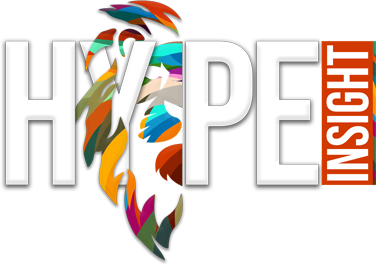The goal of any business is to build a loyal customer base and acquire more customers along the way. One of the best ways to do this is to devise an inbound marketing strategy.
An inbound marketing strategy entails businesses creating content that is engaging, interesting, and relevant to their target audience to build long-term customer relationships.
HubSpot is widely credited as the pioneer of inbound marketing and their CRM platform helps businesses just like yours to ramp up their inbound marketing efforts.
HubSpot uses its software to help businesses obtain more customers and transform them into promoters of their brand. The CRM software gives you the ability to identify the steps you need to take and explains how you can execute those steps using the HubSpot software.
There are 3 easy steps in the life cycle that will help your potential customers go from a lead to a customer, and finally, a promoter of your brand who will spread the word about your services and generate more clients.
To help you get started on your inbound marketing journey, we have also included the specific HubSpot tools you will need at each step to execute your strategy.
Step 1: Attracting visitors to your website
- Identify your buyer persona
Before developing your marketing strategy, you need to identify your target audience. Understanding your target audience’s interests, challenges, and goals will help you develop a buyer persona.
The information you gather can prove very invaluable, especially since the content you create must be directed at the target audience.
- Conduct a content audit
The majority of the time businesses start off with writing a blog, but if you want to start venturing into different content, take a closer look at the types of content you want to create.
For instance, you can select similar blog posts you’ve published in the past and create an ebook so that you make information available in a different format.
If you’ve been creating content for a longer period, assess some of the content you’ve written in the past and see what changes you can make to align your content to your overall business strategy.
- Create new content
Pushing content that you think anyone might want to read isn’t exactly a wise decision. What’s important with marketing is to engage the right audience that’s interested in what you’re offering.
Once you’ve identified that right audience, creating content that attracts them is crucial. In addition to blogs, you can use mediums like webinars, case studies, FAQs, surveys, videos, and white papers to attract your core audience to your brand.
If you’re interested in elevating your website’s content—as discussed earlier—then the Content Strategy Tool is the best HubSpot tool. You can upgrade or personalise your website and optimise the conversion rates based on your visitors’ preferences.
Step 2: Transforming strangers into leads
- Offer your audience something of value
Regardless of what the offer is, you need to create a situation where your audience is willing to embark on a journey with you..
- Present a call to action (CTA)
Once you’ve decided on the offer, it’s time to ensure your website visitors make use of it. This is where a creative and bright CTA can help your visitors take that step toward availing the offer.
- Create a HubSpot landing page
This page has a simple format without any other CTAs, or anything that could distract them from submitting the form and getting the offer.
Once your visitors have successfully submitted the form, you can provide them with the offer they’ve requested and encourage them to remain on the page and engage with your website.
Once this process has been completed, your visitors will be added to the HubSpot Contact Database, where they will be treated as leads instead of anonymous visitors.
Step 3: Nurturing leads and transitioning them into customers
Now that you’ve secured our leads, it’s important to make sure that you nurture them and retain their interest in the brand.
Some ways that you can nurture your leads into becoming loyal and paying customers is through:
- Targeted content: Leads must be nurtured with targeted content that interests them
- Regular follow-ups: Once a lead has been converted on your website, your response must be immediate. Do not give your lead any time to detract from your brand or find a competitor
- Personalised emails: Emails must address the challenges and goals of your customers. Identify what interests them and send out personalised emails that grab their attention
- Multi-channel lead nurturing: Emails are no longer the only way to nurture or engage a customer. With more platforms being at their fingertips, people spend more time on other apps, so you should think about finding other modes of communication
You can use Meeting Tools on the HubSpot CRM to help you get in touch with prospective clients.
You can also come up with various templates that will make it much easier to get positive responses from your prospects.
Implement an effective marketing strategy with HubSpot
While acquiring new clients is important, businesses must identify how they can obtain the right customers that are genuinely interested and can benefit from their products or services.
With the evolution of marketing, there are a number of ways that marketers can use software like HubSpot to focus on more customers and spend less time on gruelling administrative work.
HubSpot has everything from sales and marketing to content management and customer support to help businesses automate their inbound marketing strategy.
Nailing your marketing strategy is important and making sure you use the right strategy and right tools to achieve your marketing goals can be a make-or-break situation for your brand.


